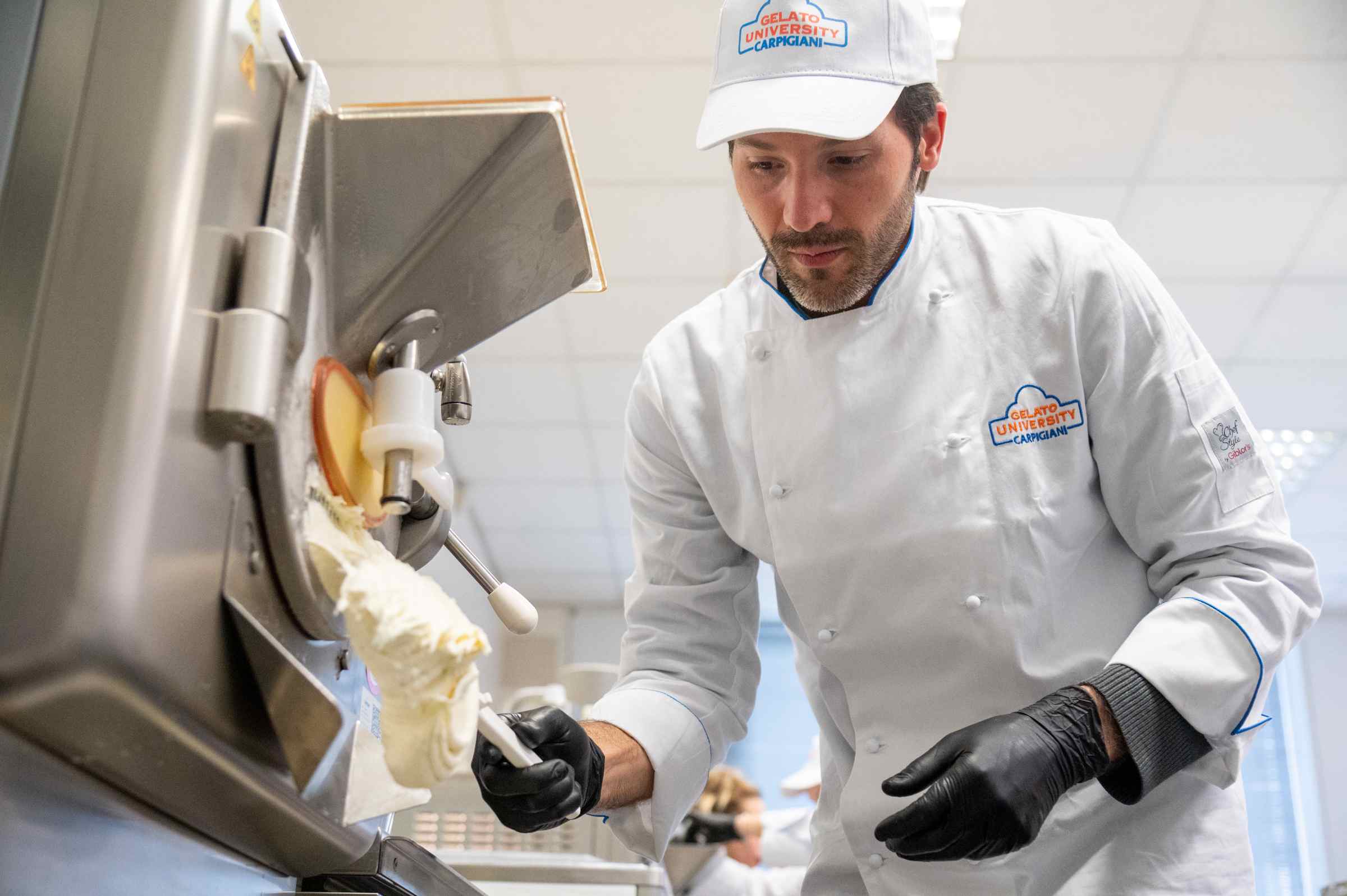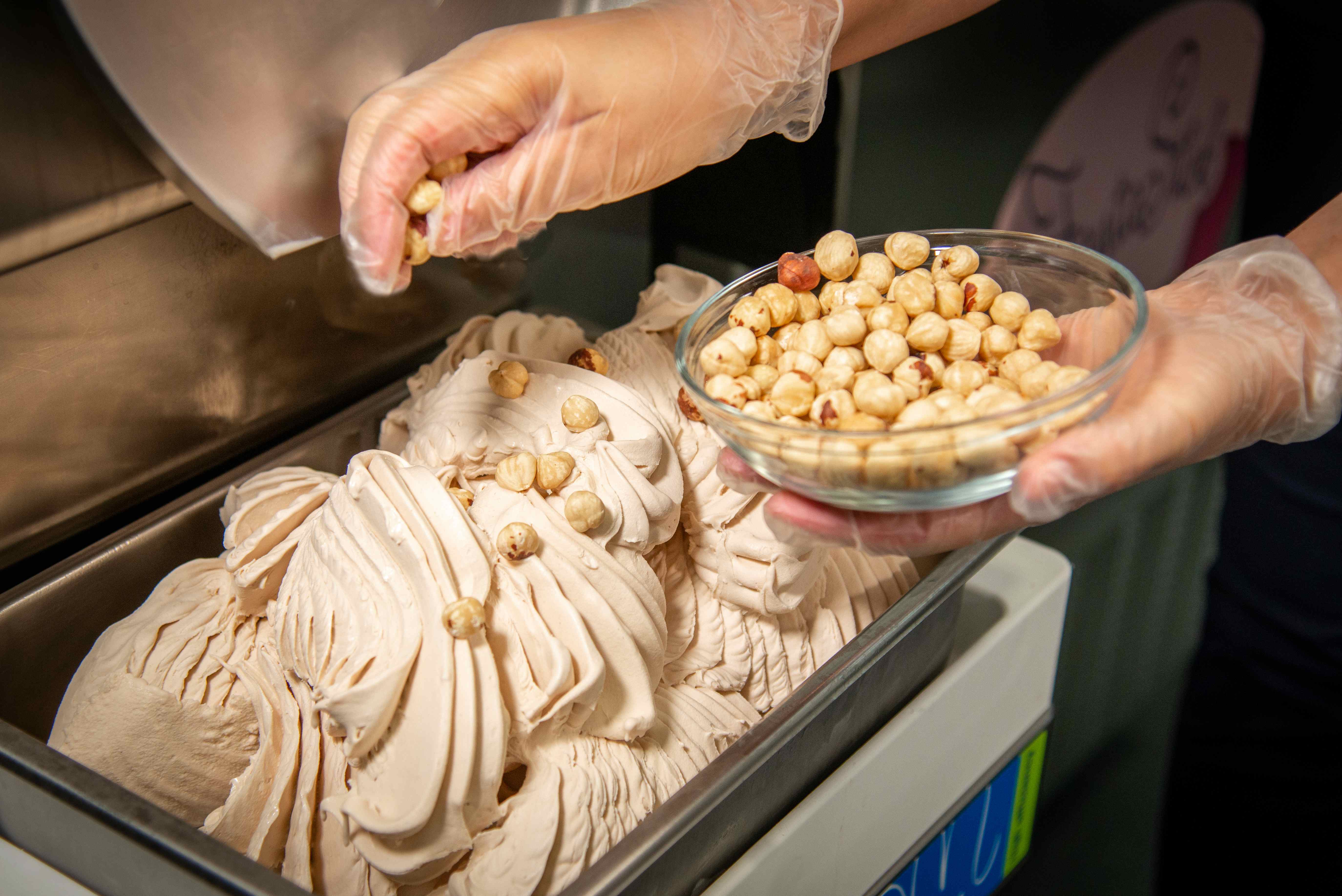

The preparation of artisanal gelato following the principles of solid Italian tradition requires the proper mixing of ingredients in order to achieve a creamy texture and balanced taste.
A procedure that requires willingness to experiment and an analysis of individual details to achieve a level of excellence in the production of a gelato that can be featured in a variety of dishes, not just desserts.
In this article we will look at the main elements to focus on.
You might be interested in: "Plate design and the opportunities presented by gelato shapes"
Let’s start with the basics. Chemically and physically, artisanal gelato is an emulsified and creamy product in which various phases and different components coexist and need to be in balance with each other. More specifically, there are liquids, solids, as well as air and cold. The absence of just one of these elements will make it impossible to produce artisanal gelato.
Gelato also contains a mixture of functional and aromatic ingredients that make the gelato a product with high nutritional content and, above all, an actual food.
Specific machinery that rapidly and dynamically freezes the mix is essential for its production.
During this specific process emulsion takes place, that is the mix passes from a liquid state to an increasingly creamy consistency, incorporating air and increasing in volume.
A final consideration, gelato is divided into two categories: milk-based and water-based gelato, the latter generally called sorbet.
The gelato freezing process
There are certain steps that need to be taken before getting to the actual freezing of gelato.
The first steps in the production of our artisanal gelato are the selection of ingredients and the formulation of the recipe, which is followed by the crucial step of pasteurization.
Pasteurization is the stage in which the liquid gelato mix is actually produced, which has the function of making the recipe hygienically safe, but also and above all of finely blending the ingredients through the mechanical action of mixing and micronization of the ingredients combined with heat treatment at specific temperatures depending on the various types of mix to be treated. This process is carried out inside specific machines, called pasteurizers, as well as multifunctional batch freezers. These are also available in compact sizes, suitable for the small spaces of restaurant kitchens.
Following a period of aging of the mixture (ideally between 4 and 12 hours), the next step is the flavoring of the mix, i.e., the addition of ingredients to achieve the desired final flavor (e.g., pistachio, yogurt, flavored paste, etc.). Flavoring alters the balance of the mix, which then needs to be rebalanced by compensation, that is by adding ingredients such as sugars (usually dextrose), or milk, water, or cream, until the various components fall within the ideal parameters.
The balanced mix is then frozen using machines designed specifically for this process. Depending on whether the product is consumed immediately or later, the process of hardening and storing the gelato before serving must then be assessed.
You might be interested in: "Why choose Carpigiani as your ideal partner in the kitchen"
The parameters of a perfectly balanced Italian artisanal gelato
As mentioned, in order for the mix to be perfectly balanced certain parameters must be respected.
Let’s start with sugars (we use the plural because different types can be used), the percentage of which ranges from 18% to 22%. The general principle to keep in mind is that the more sugar there is in the mix, the softer the gelato.
We then move on to another solid ingredient, nonfat dry milk, with a percentage between 7% and 12%.
Fats, in a proportion of 7% to 16% of the mix, also contribute to the softness of the gelato.
Finally, a small but crucial part is reserved for stabilizers, accounting for 0.2% to 0.5% of the mix.
In addition to these parameters, the advanced technology of the machine used makes it possible to obtain a perfect product very quickly, resulting in higher quality gelato.
As seen in this brief overview, there are a number of steps to follow and they require practice. Taking a course may be the best way to achieve a level of excellence in the production of high-quality gelato.
Privacy notice
We use cookies or similar technologies for technical purposes and for different purposes only with your prior and explicit consent as specified in cookie policy.
You can express your consent using the button "Consent all". Unless you select one of this options we will use essential functional cookies only